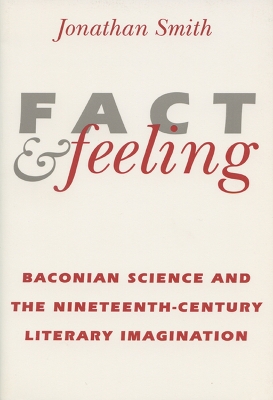In his famous lecture on 'The Two Cultures,' C.P. Snow argued that the modern intellectual gulf between writers and artists on the one hand, scientists and engineers on the other, had its roots in the nineteenth century. Jonathan Smith challenges that view by examining the cultural debate about scientific method in nineteenth-century Britain. Focusing on the status of Francis Bacon and his inductive methodology, Smith shows that literary figures were involved, both directly and indirectly, in the effort to construct a methodology that would serve both science and literature by bringing together fact and feeling, reason and imagination. Smith opens with a historical overview of the debate that includes such figures as Samuel Coleridge, John Herschel, William Whewell, J.S. Mill, Thomas Macaulay, G.H. Lewes, John Tyndall, Stanley Jevons, and Karl Pearson. Then, in a series of chapters that spans the century, Smith examines the various and complex ways in which a wide range of writers reacted to and participated in this Baconian debate. From the prose of Wordsworth and Coleridge to the fantasy of Edwin Abbott's Flatland and the detective fiction of Arthur Conan Doyle, from the travel narrative of Darwin's Voyage of the Beagle to the art criticism of John Ruskin and the novels of George Eliot, Smith uncovers more convergence than divergence in nineteenth-century scientific and literary methods. By drawing heavily on the writings of both contemporary scientists and modern historians of science, Smith contends that, in the thirty-five years since Snow's lecture, much of the literary criticism concerned with denying the existence of the two cultures has in fact reinforced that cultural gulf in subtle and self-defeating ways.
- ISBN13 9780299143503
- Publish Date 15 October 1994
- Publish Status Out of Print
- Out of Print 21 May 2021
- Publish Country US
- Imprint University of Wisconsin Press
- Format Hardcover
- Pages 288
- Language English
